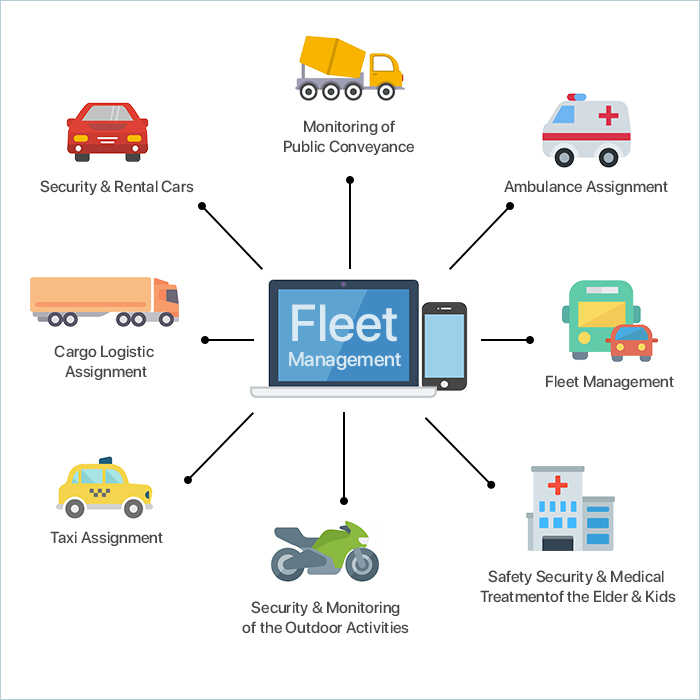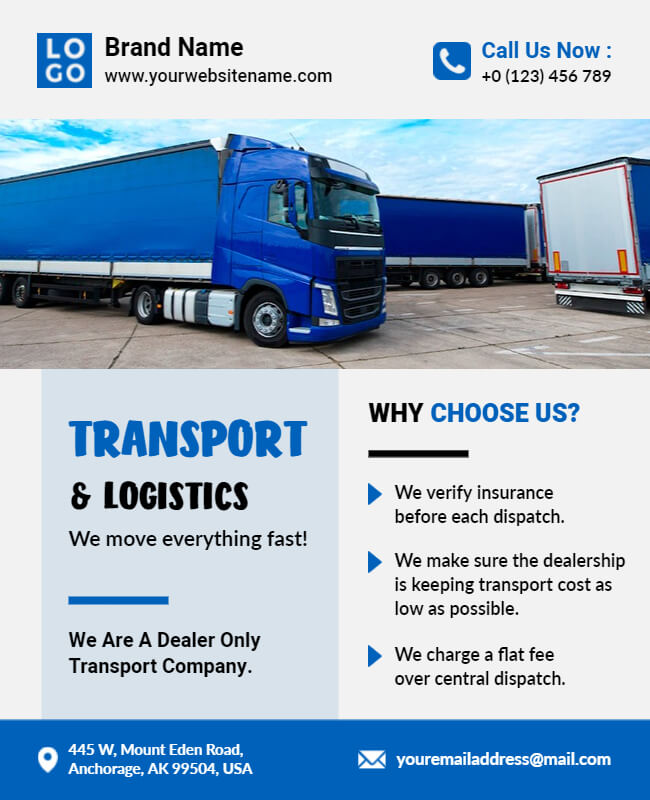Understanding the Transportation Industry: A Primer for New Entrepreneurs
The transportation industry is a complex and multifaceted sector that plays a vital role in the global economy. With various sectors such as trucking, logistics, courier services, and more, it presents numerous opportunities for new entrepreneurs looking to start a business. However, it also comes with its unique set of challenges. To succeed in this industry, it’s essential to understand the intricacies of the transportation sector and how to navigate its complexities.
One of the primary challenges facing new entrepreneurs in the transportation industry is the high level of competition. With numerous established companies already operating in the market, it can be difficult to stand out and attract customers. Additionally, the industry is heavily regulated, with various federal, state, and local laws governing everything from safety standards to environmental regulations.
Despite these challenges, the transportation industry offers many opportunities for growth and innovation. With the rise of e-commerce and the increasing demand for fast and efficient delivery, there is a growing need for reliable and efficient transportation services. Furthermore, advances in technology have made it possible for companies to streamline their operations, reduce costs, and improve customer service.
For those looking to start a transportation company, it’s essential to conduct thorough market research and understand the needs of their target audience. This includes identifying the types of goods or services to be transported, the geographic area to be served, and the level of competition in the market. By understanding these factors, entrepreneurs can develop a solid business plan that sets them up for success.
Opening a transport company requires careful planning and execution. It involves obtaining necessary licenses and permits, building a fleet of vehicles, hiring and training drivers, and managing operations efficiently. By understanding the transportation industry and its complexities, entrepreneurs can navigate these challenges and build a successful business.
Developing a Solid Business Plan: Your Roadmap to Success
A well-crafted business plan is essential for any entrepreneur looking to start a successful transportation company. A comprehensive plan will serve as a roadmap, guiding your decision-making and helping you navigate the challenges of launching a new business. When learning how to open a transport company, it’s crucial to understand the importance of a solid business plan.
A good business plan should include market research, which will help you understand your target audience, their needs, and the level of competition in the market. This research will also help you identify potential opportunities and threats, allowing you to develop strategies to capitalize on the former and mitigate the latter.
In addition to market research, your business plan should include a detailed financial projection, outlining your revenue streams, expenses, and profit projections. This will help you secure funding, whether through loans or investors, and ensure that your business is financially sustainable.
Operational strategies are also a critical component of a business plan. This includes details on how you will manage your fleet, hire and train drivers, and maintain your vehicles and equipment. By outlining these strategies, you can ensure that your business is running efficiently and effectively.
A business plan should also include a marketing and sales strategy, outlining how you will attract and retain customers. This may include details on your pricing structure, advertising and promotional activities, and customer service policies.
When developing a business plan, it’s essential to be realistic and flexible. Your plan should be a living document, subject to change as your business evolves. By regularly reviewing and updating your plan, you can ensure that your business remains on track and continues to grow and succeed.
Creating a comprehensive business plan takes time and effort, but it’s a crucial step in launching a successful transportation company. By following these steps and including the necessary components, you can develop a plan that will serve as a roadmap for your business and help you achieve your goals.
Obtaining Necessary Licenses and Permits: Navigating Regulatory Requirements
When learning how to open a transport company, it’s essential to understand the various licenses and permits required to operate a transportation business. The transportation industry is heavily regulated, with federal, state, and local regulations governing everything from safety standards to environmental regulations.
At the federal level, the Federal Motor Carrier Safety Administration (FMCSA) regulates the transportation industry, requiring companies to obtain a USDOT number and comply with safety regulations. Additionally, companies must obtain a Motor Carrier (MC) number, which is required for interstate transportation.
At the state level, regulations vary, but most states require transportation companies to obtain a state-specific license or permit. For example, in California, transportation companies must obtain a California Highway Patrol (CHP) permit, while in Texas, companies must obtain a Texas Department of Motor Vehicles (TxDMV) permit.
Local regulations also apply, with cities and counties requiring transportation companies to obtain local permits or licenses. For example, in New York City, transportation companies must obtain a New York City Department of Consumer Affairs (DCA) license.
To obtain these licenses and permits, transportation companies must meet specific requirements, such as maintaining liability insurance, passing safety inspections, and complying with environmental regulations. Companies must also pay fees, which vary depending on the type of license or permit required.
It’s essential to note that regulations and requirements can change, so it’s crucial to stay up-to-date on the latest regulations and requirements. Companies can check with the relevant regulatory agencies to ensure compliance and avoid fines or penalties.
By understanding the various licenses and permits required to operate a transportation company, entrepreneurs can navigate the regulatory requirements and ensure compliance. This is a critical step in launching a successful transportation business and avoiding costly fines or penalties.
Building a Fleet: Acquiring and Maintaining Vehicles and Equipment
When learning how to open a transport company, one of the most critical decisions you’ll make is how to build your fleet. Your vehicles and equipment are the backbone of your business, and it’s essential to choose the right options to ensure safety, efficiency, and profitability.
There are several options for acquiring vehicles and equipment, including purchasing, leasing, and renting. Each option has its pros and cons, and the right choice for your business will depend on your specific needs and budget.
Purchasing vehicles and equipment can provide long-term cost savings and flexibility, but it requires a significant upfront investment. Leasing, on the other hand, can provide more flexibility and lower upfront costs, but it may not offer the same level of control and customization.
Renting vehicles and equipment can be a good option for short-term or seasonal needs, but it may not be the most cost-effective solution for long-term use.
Regardless of which option you choose, it’s essential to maintain your vehicles and equipment regularly to ensure safety and efficiency. This includes regular maintenance checks, repairs, and replacements as needed.
Technology can also play a significant role in maintaining your fleet. Consider investing in fleet management software, which can help you track vehicle performance, monitor maintenance needs, and optimize routes and schedules.
In addition to maintaining your vehicles and equipment, it’s also essential to ensure that your drivers are properly trained and equipped to operate them safely and efficiently. This includes providing regular training and support, as well as ensuring that drivers have the necessary licenses and certifications.
By building a well-maintained and efficient fleet, you can ensure that your transportation company is running smoothly and profitably. This is a critical step in learning how to open a transport company and achieving long-term success.
Hiring and Training Drivers: The Key to Excellent Customer Service
When learning how to open a transport company, one of the most critical decisions you’ll make is hiring and training drivers. Your drivers are the face of your company, and their performance can make or break your reputation and customer satisfaction.
To hire qualified drivers, you’ll need to develop a comprehensive recruitment strategy that includes advertising job openings, conducting interviews, and performing background checks. You should also consider partnering with local trucking schools or training programs to find qualified candidates.
Once you’ve hired your drivers, it’s essential to provide them with comprehensive training to ensure they have the skills and knowledge needed to perform their jobs safely and efficiently. This includes training on company policies and procedures, as well as regulatory requirements such as hours of service and cargo securement.
In addition to initial training, it’s also important to provide ongoing training and support to your drivers. This can include regular safety meetings, driver feedback sessions, and opportunities for professional development.
Creating a positive company culture is also essential for retaining drivers and providing excellent customer service. This includes fostering a culture of safety, respect, and open communication, as well as providing competitive pay and benefits.
Technology can also play a significant role in supporting your drivers and improving customer service. Consider investing in driver management software, which can help you track driver performance, monitor safety metrics, and optimize routes and schedules.
By hiring and training qualified drivers, and providing them with the support and resources they need to succeed, you can ensure that your transportation company is providing excellent customer service and building a strong reputation in the industry.
Remember, when learning how to open a transport company, it’s essential to prioritize driver recruitment, training, and retention. By doing so, you can build a team of skilled and dedicated drivers who will help drive your business forward.
Managing Operations: Dispatching, Routing, and Tracking
When learning how to open a transport company, it’s essential to understand the importance of efficient operations management. This includes dispatching, routing, and tracking, which are critical components of a successful transportation business.
Dispatching involves assigning drivers and vehicles to specific routes and loads, while routing involves planning the most efficient routes to minimize fuel consumption and reduce delivery times. Tracking involves monitoring the location and status of vehicles and loads in real-time, which helps to ensure that deliveries are made on time and that drivers are safe.
Technology can play a significant role in streamlining these processes. Consider investing in transportation management software (TMS), which can help you automate dispatching, routing, and tracking. TMS can also provide real-time visibility into your operations, allowing you to make data-driven decisions and optimize your routes and schedules.
In addition to TMS, other technologies such as GPS tracking and mobile apps can also help to improve operations management. GPS tracking can provide real-time location data, while mobile apps can enable drivers to access critical information and communicate with dispatchers on the go.
By implementing these technologies and streamlining your operations, you can improve efficiency, reduce costs, and enhance customer satisfaction. This is a critical step in learning how to open a transport company and achieving long-term success.
It’s also important to note that operations management is not just about technology, but also about people and processes. It’s essential to have a well-trained team of dispatchers, drivers, and customer service representatives who can work together to ensure that operations run smoothly and efficiently.
By combining technology with people and processes, you can create a robust operations management system that will help your transportation company thrive in a competitive market.
Marketing and Sales: Attracting and Retaining Customers
When learning how to open a transport company, it’s essential to understand the importance of marketing and sales in attracting and retaining customers. A well-planned marketing strategy can help you differentiate your company from competitors, build brand awareness, and drive revenue growth.
To create a marketing plan, start by identifying your target audience and their needs. This will help you develop a unique value proposition that sets your company apart from competitors. Next, determine your marketing budget and allocate resources to various marketing channels, such as social media, email marketing, and advertising.
Building a website is also crucial for attracting and retaining customers. Your website should be user-friendly, visually appealing, and provide clear information about your services and company. Consider investing in search engine optimization (SEO) to improve your website’s visibility in search engine results.
Social media is another powerful marketing tool that can help you connect with customers and build brand awareness. Create social media accounts on platforms such as Facebook, Twitter, and LinkedIn, and post regular updates about your company and services.
In addition to marketing, sales is also a critical component of attracting and retaining customers. Develop a sales strategy that includes building relationships with potential customers, identifying their needs, and providing solutions that meet those needs.
By combining marketing and sales efforts, you can attract and retain customers, drive revenue growth, and build a successful transportation company. This is a critical step in learning how to open a transport company and achieving long-term success.
Remember, marketing and sales are ongoing processes that require continuous effort and improvement. Stay up-to-date with industry trends, best practices, and customer needs to ensure that your marketing and sales strategies remain effective and competitive.
Financial Management: Keeping Your Transportation Company on Track
When learning how to open a transport company, it’s essential to understand the importance of financial management in keeping your business on track. Financial management involves budgeting, accounting, and insurance, and is critical to maintaining profitability and ensuring the long-term success of your company.
Budgeting is the process of creating a financial plan that outlines projected income and expenses. This helps you make informed decisions about how to allocate resources and manage cash flow. Consider creating a budget that includes projected revenue, expenses, and profits, as well as a plan for managing cash flow and maintaining liquidity.
Accounting is the process of recording and reporting financial transactions. This includes tracking income and expenses, as well as preparing financial statements such as balance sheets and income statements. Consider hiring an accountant or bookkeeper to help with financial record-keeping and reporting.
Insurance is also an essential component of financial management. This includes liability insurance, which protects your company in the event of accidents or other incidents, as well as property insurance, which protects your vehicles and equipment. Consider working with an insurance broker to find the right insurance coverage for your company.
In addition to budgeting, accounting, and insurance, it’s also important to manage cash flow effectively. This includes managing accounts receivable and payable, as well as maintaining a cash reserve to cover unexpected expenses. Consider using financial management software to help streamline financial processes and improve cash flow management.
By prioritizing financial management, you can ensure that your transportation company remains profitable and competitive in the market. This is a critical step in learning how to open a transport company and achieving long-term success.
Remember, financial management is an ongoing process that requires continuous monitoring and improvement. Stay up-to-date with industry trends and best practices, and consider seeking the advice of a financial advisor or accountant to ensure that your company is on track financially.


.jpg)



